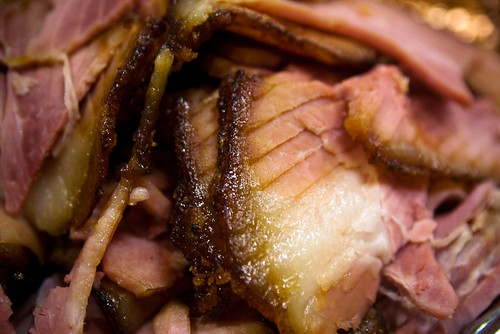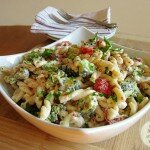Holiday Food Safety ~ The festive season is rapidly approaching, in fact it has arrived! Accompanying this fun season is lots of baking, entertaining, and dinners with family and friends. While it’s always important we all follow proper food safety steps, it’s especially important for women to pay close attention to food safety during pregnancy. To protect themselves and their unborn baby, pregnant women should follow the four key steps to food safety: Cook; Clean; Chill and Separate. These tips will help protect both you and your family from foodborne illnesses.

Photo credit Steven Depolo (CC)
Chill
- Keep cold food cold to slow down most bacterial growth. Set your refrigerator to 4ºC (40ºF) and your freezer to -18ºC (0ºF).
- Never defrost food at room temperature. Thaw food in the refrigerator, in the microwave, or in cold water (replaced every 30 minutes).
- Always marinate meat, poultry and seafood in the refrigerator!
- Bacteria grow quickly at room temperature. When shopping, buy perishable foods last, and refrigerate or freeze them as soon as you get home.
- Serve food right away, and refrigerate or freeze perishable food, prepared food and leftovers within two hours. Avoid letting foods sit at temperatures between 4ºC (40ºF) and 60ºC (140ºF).
Separate
- Separate raw meat, poultry, and seafood from other foods in your grocery cart, and while storing, preparing and serving foods.
- Store these raw foods in sealed containers or plastic bags on bottom shelves in your refrigerator to keep their juices from dripping onto other foods.
- Use one cutting board for produce, and a separate one for raw meat, poultry and seafood.
Clean
- Always wash your hands with soap and water for at least 20 seconds before handling food. Also wash your hands after using the bathroom, changing diapers, handling pets, or handling raw meat, poultry, seafood or eggs.
- Sanitize countertops, cutting boards and utensils before and after preparing food. Use a kitchen sanitizer (following the directions on the container) or a bleach solution (5 ml household bleach to 750 ml of water), and rinse with water.
- Use paper towels to wipe kitchen surfaces, or change dishcloths daily to avoid the risk of cross-contamination and the spread of bacteria.
- Avoid using sponges, as they are harder to keep bacteria-free.
Cook
- Cook food completely, using a clean thermometer to measure the temperature. See Health Canada’s safe internal cooking temperature chart to learn the proper way of taking measurements and to make sure that the food has been cooked to a safe internal temperature.
- Do not use leftover marinade from raw food on cooked food. Before marinating meat, set some marinade aside in the fridge so you can use it later to baste or dip meat.
- Keep hot foods at or above 60ºC (140°F). Bacteria can grow quickly in the danger zone between 4°C to 60°C (40°F to 140°F).
Information contained in this post was obtained from the Health Canada website.
![]()
































I Love Comments